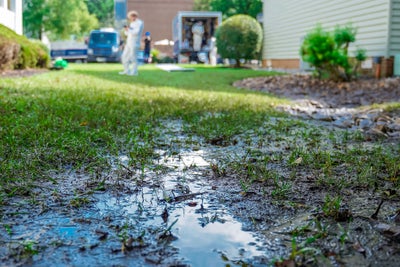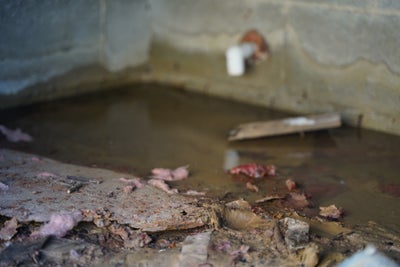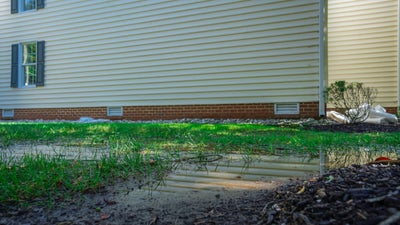Places in Canada Most Prone to Flooding

Geography plays a huge role in flooding risks across Canada. Some areas are more prone to flooding due to their location near water bodies, low elevations, or heavy rainfall. Knowing which regions are at higher risk is crucial for anyone looking to buy or protect a home. By understanding these flood-prone spots, you can take proactive steps to safeguard your property and avoid costly damage. Being informed is your best defense against unexpected water damage.
Geographic Factors Contributing to Flooding
Geographic features play a significant role in determining flooding risks. Different landscapes and water bodies can influence how and where floods occur. Understanding these factors helps in assessing flood-prone areas and preparing accordingly.
- Wetlands and Marshes: These areas act as natural sponges, absorbing excess water but when they’re saturated, they can’t hold more. This will increase the risk of flooding in surrounding areas.
- Lakes and Reservoirs: Large bodies of water can overflow during heavy rainfall or rapid snowmelt, leading to floods in nearby communities. They’re especially risky if they’re not well managed or if there’s a sudden surge in water levels.
- Coastal Zones: Coastal regions are vulnerable to flooding from storm surges, high tides, and sea-level rise. Their proximity to the ocean makes them particularly susceptible to extreme weather events and flooding.
Recognizing these geographic factors helps you understand why certain areas are more prone to flooding. By being aware of these risks, you can better prepare and protect your property from potential water damage.
3 Regions Most Prone to Flooding
Some regions in Canada are particularly prone to flooding due to their unique geographic and climatic conditions. Knowing which areas are most at risk can help you make informed decisions and take necessary precautions.

Prairies
The flat terrain of the Prairies combined with seasonal snowmelt can lead to significant flooding. When the snow melts rapidly in the spring, it can overwhelm river systems and cause widespread inundation.
Eastern Canada
This region faces risks from both river flood plains and coastal areas. Heavy rainfall and ice jams can lead to river flooding, while coastal areas are vulnerable to storm surges and high tides.
Western Canada
Mountain runoff and glacial rivers contribute to flooding in Western Canada. Rapid snowmelt and ice melt from glaciers can cause rivers to swell, leading to floods in lower-lying areas.
Understanding these flood-prone regions helps you prepare for potential risks and take appropriate measures to protect your property. Being aware of regional vulnerabilities allows you to address potential issues before they become major problems.

Flood Prep Tips for High-Risk Areas
For residents in flood-prone areas, preparation is crucial to minimize damage and ensure safety. Start by understanding your local flood risks and staying informed about weather conditions and flood warnings. Develop a flood plan that includes evacuation routes, emergency contacts, and essential items to take with you. Keep important documents, valuables, and electrical appliances elevated to prevent water damage, and consider installing flood barriers or sump pumps to protect your property.
Additionally, maintain drainage systems by regularly cleaning gutters, downspouts, and drains to keep them clear of debris. By taking these proactive steps, you can reduce the impact of flooding on your home and increase your readiness for potential flood events, providing peace of mind during unpredictable weather conditions.
Contact Groundworks for Professional Basement Flood Preparation

Understanding the geographical factors that contribute to flooding across Canada is essential to make informed decisions about your home. From wetlands and coastal zones to specific high-risk regions, we have over 30 years of experience solving flooding basements in Canada.
Groundworks offers custom-engineered solutions for all your flood concerns. Contact us today to schedule a free inspection and estimate to ensure your home is ready to handle anything, giving you peace of mind no matter where you live.
Basement Flooding FAQs
Most homeowner’s insurance policies provide coverage for water damage resulting from events such as burst pipes, sink or bathtub overflows, and leaks from water heaters, dishwashers, or washing machines. However, these policies typically do not cover basement or foundation damage caused by heavy rainfall, storms, mudslides, sinkholes, or underground water seepage. In such cases, separate flood insurance coverage becomes necessary to safeguard against these types of water-related incidents.
There is no definitive timeline, but it is generally recommended that you wait until the basement has undergone professional cleaning and waterproofing measures. This approach ensures that your possessions will not be subject to further damage once they are restored to the basement space.
Failure to clean up a basement flood can lead to ongoing moisture issues and damage to any stored items. These possessions will become susceptible to foul odors and potentially hazardous mold growth, posing health risks. It is highly advisable to promptly address a basement flood to mitigate further harm.